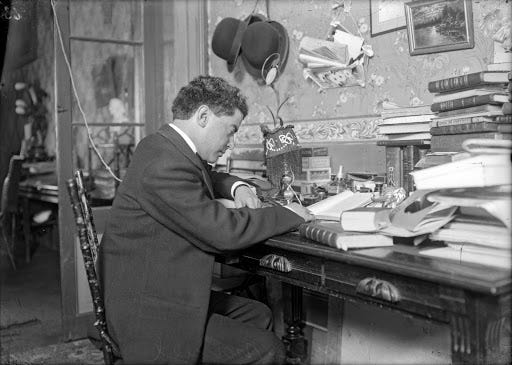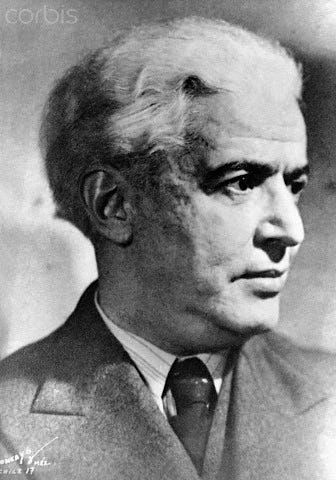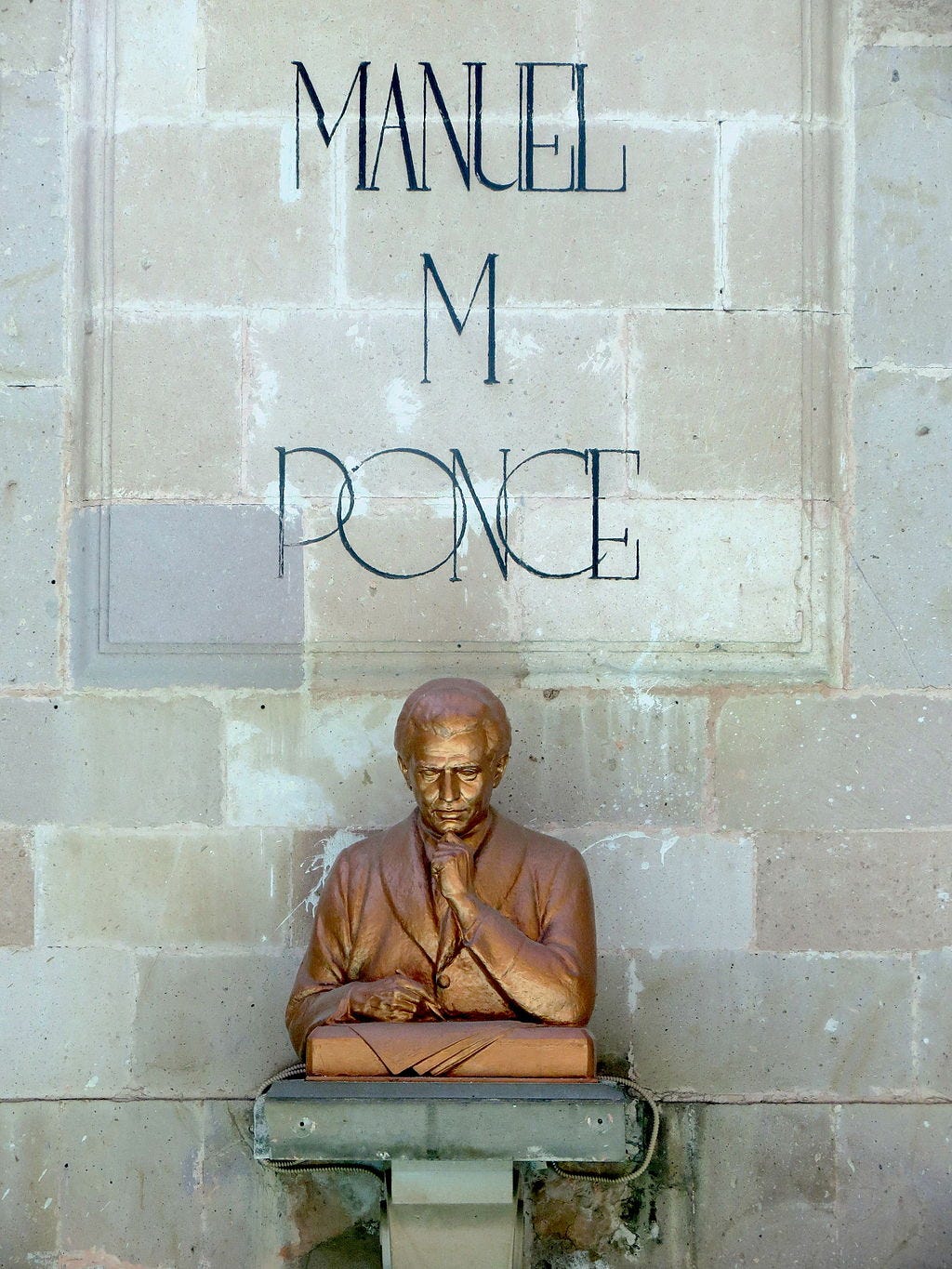
The Mexican composer Manuel Ponce was born in Zacatecas in 1882, but grew up mostly in Aguascalientes. He was a child prodigy and by the time he entered the National Conservatory of Music in 1901, he was already quite well known as a composer and pianist. In 1904, Ponce left for Europe, studying composition in Italy and Germany. He returned to Mexico in 1908 and began teaching at his alma mater, the national conservatory, in 1909.
Ponce, more than any other composer before him, brought Mexican popular and folk music into the concert hall. Like Dvorak and so many other composers I’ve recently written about, Ponce wanted to fuse “native” music with western classical music. The Brazilian composer, Heitor Villa-Lobos would write about Ponce after meeting him in Paris in the twenties,
I remember that I asked him at that time if the composers of his country were as yet taking an interest in native music, as I had been doing since 1912, and he answered that he himself had been working in that direction. It gave me great joy to learn that in that distant part of my continent there was another artist who was arming himself with the resources of the folklore of his people in the struggle for the future musical independence of his country
Ponce is known throughout the world for his 1912 song Estrellita, which is a perfect example of this fused style. Here are a just a few of the many great artists who recorded this unforgettable song.
With songs like Estrellita, and others including A la orilla de un palmar, Alevántate, and La Pajarera, Ponce has been called the creator of the modern Mexican song. However, the music that he wrote for guitar is considered part of the core repertoire for the instrument and Ponce’s lifelong friend, Andres Segovia performed his music throughout his career.
One of the great guitar concertos that should be played far more often is Ponce’s fantastic Concierto del Sur.
Ponce also wrote a substantial amount of compositions for the piano. These works are extraordinary and perfectly capture the unique form of Mexican folk song and popular music from the end of the 19th century. This complete compilation of Ponce’s piano works by the pianist, Hector Rojas, is indispensible.
And both of his piano concertos are striking for the way Ponce creates very singular and efficient sounds from the orchestra, which become a perfect counterweight to the solo lines of the piano.
Ponce’s chamber music compositions fit on a slightly smaller list but are equally fascinating and worthy of a listen. Cuarteto Latinoamerica’s recording of Ponce’s chamber music, including his fascinating String Quartet and Violin Sonata is fantastic.

Ponce’s orchestral pieces are substantial and I find them to all have a very individual way of using the orchestra to achieve specific colors and effects. This recording of Chapultepec by the Orquesta Sinfónica de San Luis Potosí, conducted by José Miramontes Zapata should convince any conductor to program and conduct this piece. But listen to the entire album because there’s treasure trove to discover!
Ponce died in 1948 and is buried in Mexico City’s Roundhouse of the Illustrious Men in the Pantheon of Dolores.

